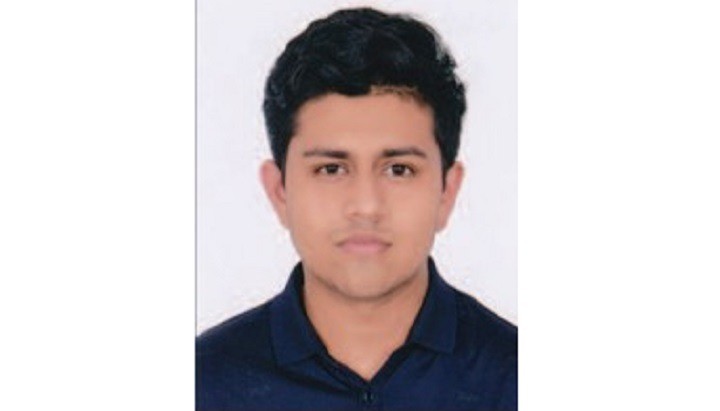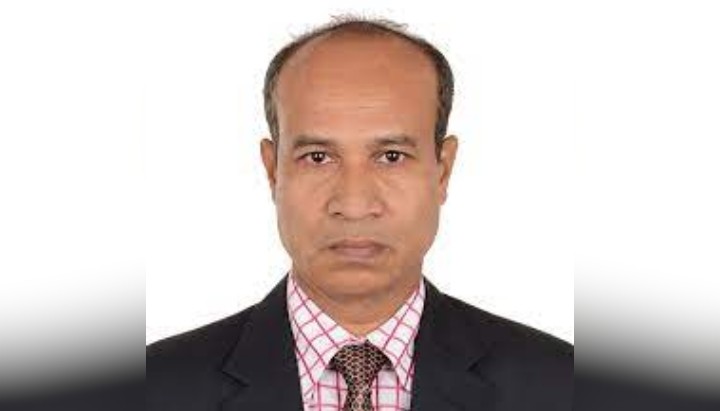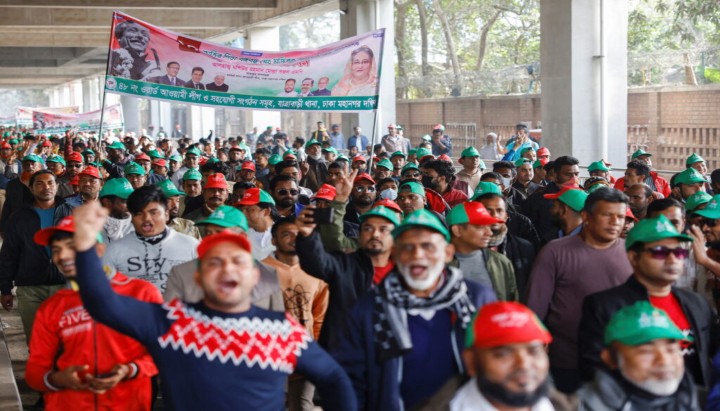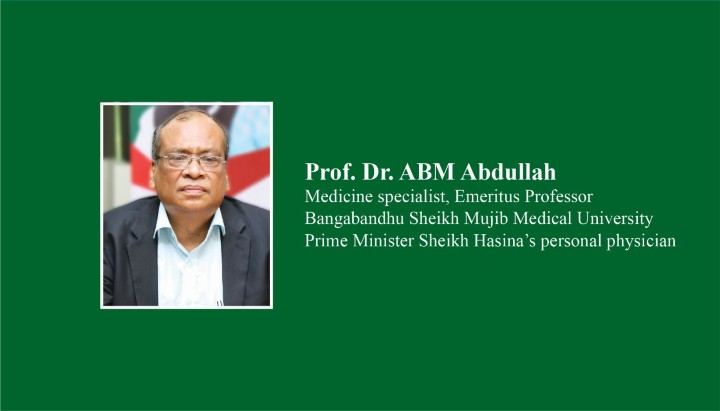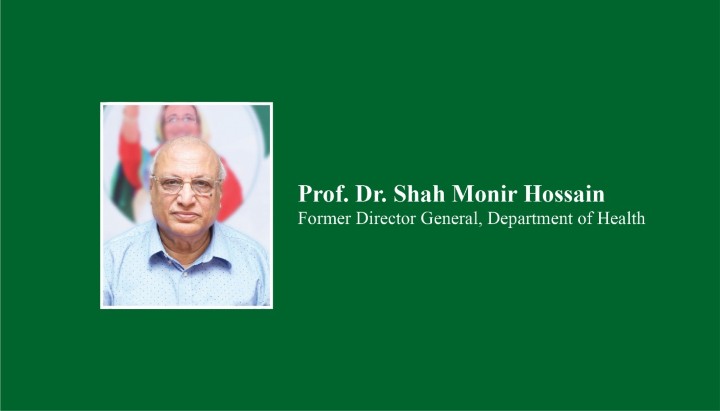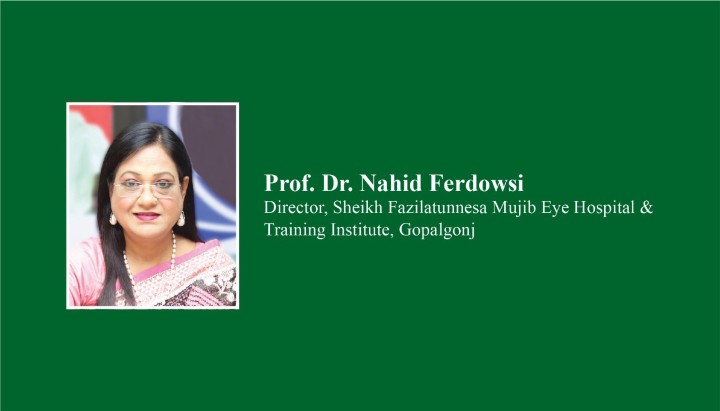It is the year 2006, the end of term Bangladesh Nationalist
Party (BNP) and Jammat-e-Islami’s all i a n c e government and the beginning of
a military backed caretaker government for 2 years. BNP had left the country in
a stagnant state with hardly any development in any sector. With championing of
corruption 3 times in the world, creating breeding center of radical groups and
harboring of militancy, decreasing literacy rate- 082 percent and failureness
of adding single megawatt electricity in the national grid was past bearing for
most people.
The year 2009 was a harbinger of a fresh start for
Bangladesh. After the three years of caretaker government and military rule,
Awami League (AL) won the election and formed a government in 2009 with Sheikh
Hasina as the prime minister. It was then that The Peoples Republic of
Bangladesh saw a glimmer of hope for a better future and a better way of life.
Before understanding Bangladesh’s success in development, looking back at the
political power shifts in Bangladesh and their relation to Bangladesh
development will bring a much clear understanding.
Under the leadership of Khaleda Zia, the BNP regained power
in February 1991 elections. In 1991, the parliament overwhelmingly changed the
constitution and reestablished the parliamentary system of government, in a
rare show of unanimity between the AL and the BNP. Power alternated between the
BNP and the AL in elections conducted between 1991 and 2006. In June 1996, the
AL was voted to power. The BNP and its coalition allies, including religious-political
groups like the Jamaat-e-Islami, won another election in October 2001, handing
power to the BNP and its coalition partners. After 1978, parties that support a
blend of religion and politics grew in size and influence. In the late 1990s
and early 2000s, Islamist militant organisations developed. The country was
thrown into upheaval in late 2006 when the outgoing administration and
opposition parties couldn’t agree on a number of topics, including who should
lead the interim government until the election. Following months of unrest,
bloodshed, and instability, a military-backed technocratic caretaker
administration was appointed in January 2007 under a 1996 constitutional
clause. The AL-led alliance won a landslide victory in the December 2008
election, securing a historic majority in parliament. In early 2009, the
government was confronted with a revolt by the Bangladesh Rifles (BDR), a
border security unit. Since then, the government has maintained control over
the broader political situation, and democratic institutions have performed
well. Despite a difficult global climate, notably the global financial crisis
during the first three years, Bangladesh’s economy performed well, with growth
nearing 6% in 2010. It’s also worth mentioning that the government has made
significant progress in a variety of areas, including foreign relations,
poverty reduction, and ubiquitous access to electricity, to name a few
achievements. Although pervasive corruption and cronyism, as well as resource
misallocation, have hampered the country’s progress, there is a rising
recognition of the need to confront these issues seriously.
Bangladesh’s per capita income has increased thrice since
she came to office in 2008. According to the IMF, the country’s GDP stood at
$350 billion in 2021, and had an annual growth rate of 8.2 percent in 2019.
“By learning from the
past, I vow to construct a more beautiful tomorrow.” We shall establish a
non-communal golden Bangladesh devoid of hunger, poverty, and illiteracy, as
envisioned by Bangabandhu Sheikh Mujibur Rahman, the Father of the Nation.”
Prime Minister Sheikh Hasina said at the introduction of her
party’s manifesto. The AL manifesto declared that Bangladesh, one of the
world’s most densely populated countries with a population of 160 million, will
become a middle-income country by 2021, and its present per capita income of
$1,750 will be tripled in the next decade. Having succeeded in making
Bangladesh a lower middle income country, the target is now set to become an
upper middle income country by 2031. The garment sector has grown to become one
of the economy’s primary foundations, employing 4.5 million people. It accounts
for 14% of GDP and roughly 80% of the country’s $35 billion in exports. Approximately
$15 billion in remittances are sent home by over 2.5 million Bangladeshi expats
each year. By managing population growth and substantially lowering infant
mortality, the South Asian nation has outperformed India and Pakistan in major
human development index metrics, resulting in a greater life expectancy of 72
years.
Bangladesh has a solid track record of development and
prosperity. Over the last decade, it has been one of the world’s fastest
growing economies, owing to a demographic dividend, robust ready-made garment
(RMG) exports, remittances, and stable macroeconomic conditions. Following the
COVID-19 pandemic, the country experienced a rapid economic recovery.
Bangladesh provides a stunning story of poverty reduction
and development to the world at large. Bangladesh went from being one of the
poorest countries in the world when it was founded in 1971 to being a
lower-middle income country in 2015. In 2026, it is expected to be removed from
the UN’s list of Least Developed Countries (LDCs). Based on the international
poverty line of $1.90 per day, poverty decreased from 43.5 percent in 1991 to
11.2 percent in 2022.
The COVID-19 epidemic has had a severe impact on Bangladesh,
as it has on other nations, limiting economic activity and reversing some of
the achievements made in the previous decade. As pandemic-related limitations
were relaxed, real GDP growth surged to 6.9% in 2021, supported by a comeback
in manufacturing and service sector activities. Exports and private consumption-led
growth are driving demand. So far, the vaccination has been administered to
more than 77.61 percent of the population. However, rising global commodity
prices, along with the uncertainty produced by the Russia Ukraine conflict,
have created additional headwinds for the country’s growth.
Prime Minister Sheikh Hasina has taken many initiatives in
the recent years to not only to create a better economy but also to create a
better living quality for denizens of Bangladesh. The construction of a new
third terminal at Hazrat Shahjalal Airport in Dhaka will make travel much
easier. With comparisons to Heathrow airport and Thailand’s airport, it is
expected to be a world class experience for travellers. It is scheduled to be
completed as early as December 2023. Moreover, the project of 20 km elevated
expressway in Dhaka is yet the most anticipated. It will reduce the much hated
traffic congestion of Dhaka city. Along with the metro rail opening in December
2022, and the expressway under construction, people in Dhaka will be released
from the pain they suffer off travelling.
The determination of our prime minister in applaudable. Even
after being rejected by the world bank and many other countries for loan to
start construction of the multipurpose Padma Bridge, and no one showing faith
in the completion of this project, our PM has once again proved everyone wrong.
Bangladesh’s first independently funded mega project will be inaugurated this
month, 25th June 2022.
Since there was no railway connections in the southern part
of Bangladesh, the government is constructing the Padma Bridge Rail Link
Project. This 172 km railway line will be constructed from Kamalapur to Jashore
across the Padma Bridge.
Furthermore, the Rooppur Nuclear Power Plant (Bangladesh’s
largest mega project) with a whopping cost of 113000 crore BDT will be
completed by 2024-25. Upon its completion, Bangladesh will join the elite group
of 33 nuclear power generating countries globally.
These are only few of the commendable projects started by Honorable
Prime Minister Sheikh Hasina has begun to develop our country. Soon enough this
country will become a sought after nation with unimaginable amenities.
Bangladesh needs to develop jobs and employment prospects
through a competitive business climate, enhanced human capital and skilled
labor force, efficient infrastructure, and a policy environment that encourages
private investment to fulfil its objective of being upper middle-income by
2031. Diversifying exports outside the RMG sector, developing the financial
sector, making urbanization more sustainable, and improving public institutions
are among the other development goals. Addressing infrastructural gaps will
hasten growth and minimize inequities in opportunity across regions and cities.
Addressing Bangladesh’s susceptibility to climate change and natural
catastrophes can aid the country’s resilience to future shocks. Shifting to
green growth would ensure the long-term viability of development outcomes for
future generations.
Bangladesh currently proudly stands as a developing trade
and investment destination, with an average annual economic growth rate of over
7% during the previous fourteen years (2008-2022). Bangladesh is moving toward
global business competency thanks to consistent development in exports, a
hardworking labor force, and dedicated entrepreneurs, all of which are aided by
the government’s pro-business, pro-investment policies. The country’s unwavering
commitment to peace and harmony, regional stability, cooperation, and economic
development through international and regional trade with its trading partners,
as well as an increasing flow of remittances from Bangladeshis living abroad,
has helped the country achieve and maintain a strong economic position. The
achievement of fast development was ascribed to strong local demand,
significant export growth, and continuing construction of infrastructure
facilities.
In its World Economic Outlook 2018, the International
Monetary Fund (IMF) classified Bangladesh as the 44th largest economy in the
world in terms of nominal GDP in 2017. In FY 2018-19, the country’s gross
domestic output was US$ 302.6 billion, up from US$ 72 billion in 2005-2006.
Ready Made Garment (RMG) is Bangladesh’s biggest export item, accounting for
84.21 percent of overall exports in 2018- 2019. RMG employs four million
people, eighty percent of them are women. Bangladeshi expats’ remittances
totaled US$15 billion in 2017-18, and they are an essential part of the
country’s economy. In 2017-18, the Foreign Exchange Reserve was US$ 32.94 billion.
In the previous five years, Bangladesh has seen a reasonable level of foreign
direct investment (FDI). Bangladesh was rated 16th out of 74 FDI-receiving
nations in the World Investment Report 2017, with a record FDI influx of US$
2.65 billion in 2019. This is the sixth year in a row that Bangladesh’s FDI has
topped a billion dollars. Bangladesh has also attained satisfactory foreign
currency reserves which stood at US$ 32.71 billion in the fiscal year 2018-2019
and its remittances grew by 9.8 percent in this time reaching a record of US
$16.4 billion.
Bangladesh’s twin policy efforts, ‘Vision 2021’ and ‘Digital
Bangladesh,’ aim to transform the nation into a middle-income country by 2021
and a developed country by 2041. Bangladesh was elevated to a Lower
Middle-Income nation by the World Bank in 2015, and it is expected to be one of
the world’s top 24 economies by 2030. Bangladesh was certified eligible for
graduation from LDC to Developing Country by the UN Committee on Development
Policy (CDP) in 2018.In 2019, the actual per capita income was $1,909 USD. In
Bangladesh, the significant middle class accounts for over 18 percent of the
population. Domestic demand is increasing as a result of the emergence of the
middle class and the overall improvement in the standard of living of the
general public, and this has become a significant driver of economic activity.
Bangladesh is presently a major producer of textiles, medicines, completed
leathers, jute and jute items, light and medium industries, information
technology, light engineering products, and small ocean-going vessels.
Bangladesh has risen to become the world’s second-largest garment exporter.
Bangladesh earned US$ 40.54 billion in export profits (fob) in 2018-19,
compared to US$ 56.06 billion in import bills (CIF) over the same time.
Petroleum products, capital goods, industrial raw materials, and agricultural
commodities make up the majority of the import list.
The increase in garment exports aided the country’s capacity
to generate crucial foreign currency and preserve financial stability. However,
because rural women made up the majority of the textile labor, this resulted in
a massive injection of wealth into rural Bangladesh. Remittance inflows from
migrant Bangladeshi workers also surged dramatically after the turn of the
century, rising from $1.7 billion in 1997 to over $15 billion in 2014.
Increased revenues in rural Bangladesh aided the expansion of rural nonfarm businesses,
which grew in tandem with agricultural prosperity. In ensuing decades, the
story of governmental initiatives leading to revolutionary change has
persisted. For example, since the early 1990s, telecommunications
liberalisation has resulted in mobile phone subscriptions exceeding population
size; since 2010, a power sector program has helped increase power generation
capacity from 3,700 megawatts in 2007 to 13,000 megawatts in 2019; and between
early 2013 and the end of 2020, a regulatory reform allowing mobile financial
services has resulted in a fifteen fold increase in the value of mobile
monetary trans[1]actions. Bangladesh’s
government does not do well on traditional measures of transparency and
efficacy. Nonetheless, successive administrations have demonstrated an
extraordinary capacity to respond to emerging economic trends with policy moves
that have resulted in dramatic change. In many situations, an ad[1]ministration’s
liberalizing policy moves undid what preceding administrations had done years,
decades, or even centuries before. In pre[1]independence
days, for example, it was the government that took on the obligation of
procuring and distributing agricultural inputs, and it was the government that
ended the monopoly in the 1980s. Nonetheless, successive governments’
willingness to depart from well-established policies that they had inherited is
admirable.
Some of the Bangladesh government’s policy decisions were
impacted by development partners through conditionalities and persuasion,
although not always at the speed that the external players wished. This had
irked the latter and given the impression that the government was sluggish to
reform. Bangladesh’s successive governments, on the other hand, appeared to
have altered their minds and resorted to making things work on their own. There
have been no significant reforms in Bangladesh, but neither have there been any
dramatic reversals. The strategy has been to implement reforms gradually but
progressively. The government took certain steps, waited to see how the market
reacted, and then took further steps. Although this method was not always well
received, the effects are increasingly being acknowledged.
Bangladesh’s supply response to policy initiatives may set
it aside from many other emerging countries. Such supply responses by a range
of economic players, including farmers, industrial businesses, and dealers,
sparked demand for more governmental initiatives, which were frequently
forthcoming. In the previous few decades, we’ve seen this kind of synergy between
government policy and economic players’ entrepreneurial activity. This is a
crucial, yet underrated, aspect of Bangladesh’s incredible growth narrative
While running this country so smoothly, Sheikh Hasina has
received many accolades along the way, including the Mother Teresa Award in
1998 and the Indira Gandhi Peace Award in 2009. In 2014, she was awarded the UNESCO
‘Peace Tree’ award, and in 2015, she was ranked 59th on Forbes’ list of the 100
Most Powerful Women. She’s also recognized for her humor and delicate
diplomacy, although she, like any other leader, has had to deal with some
controversy. Some claim that Bangladesh has regressed in terms of democracy
while her presidency. She is the perfect person for the country sent in the
perfect time.


